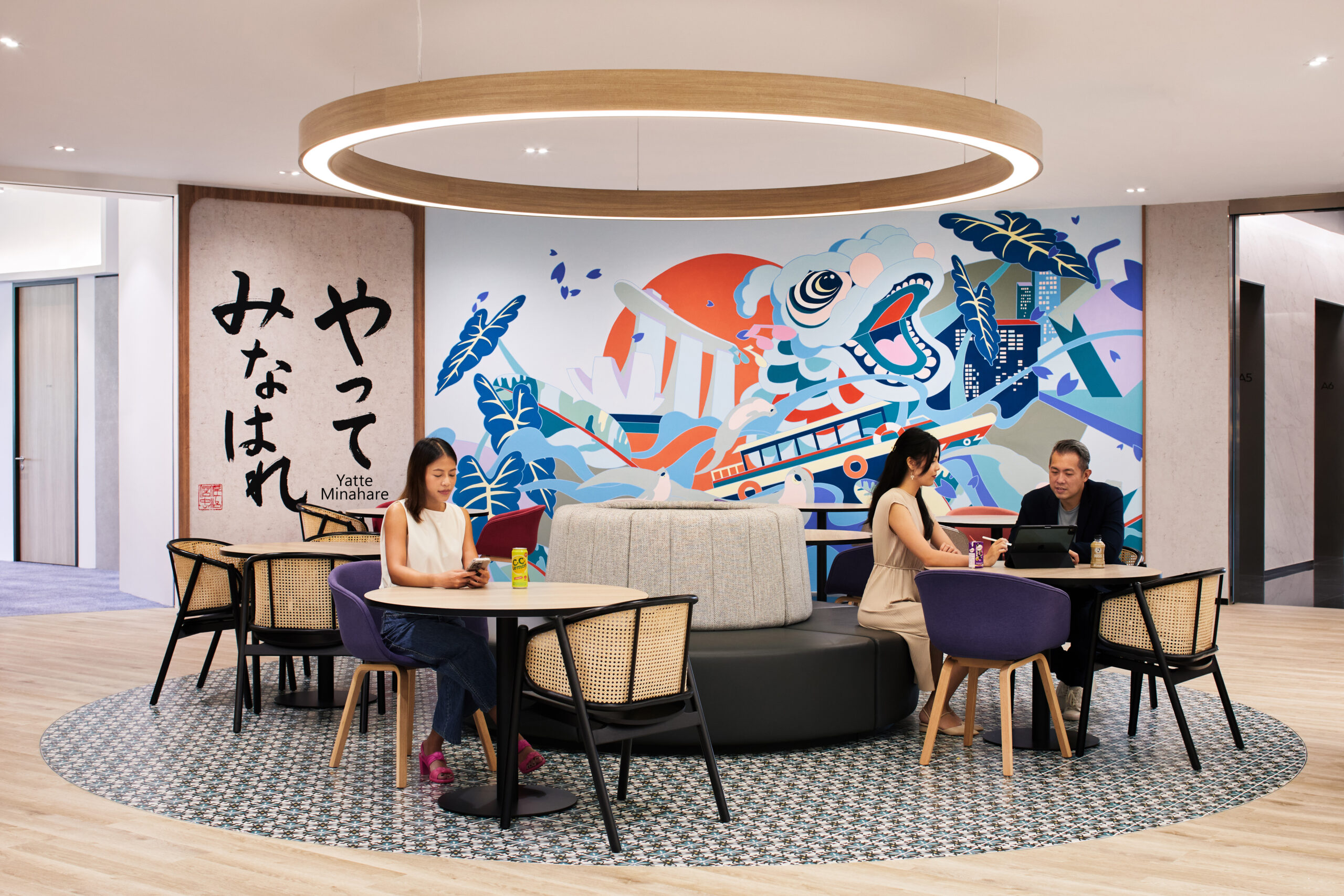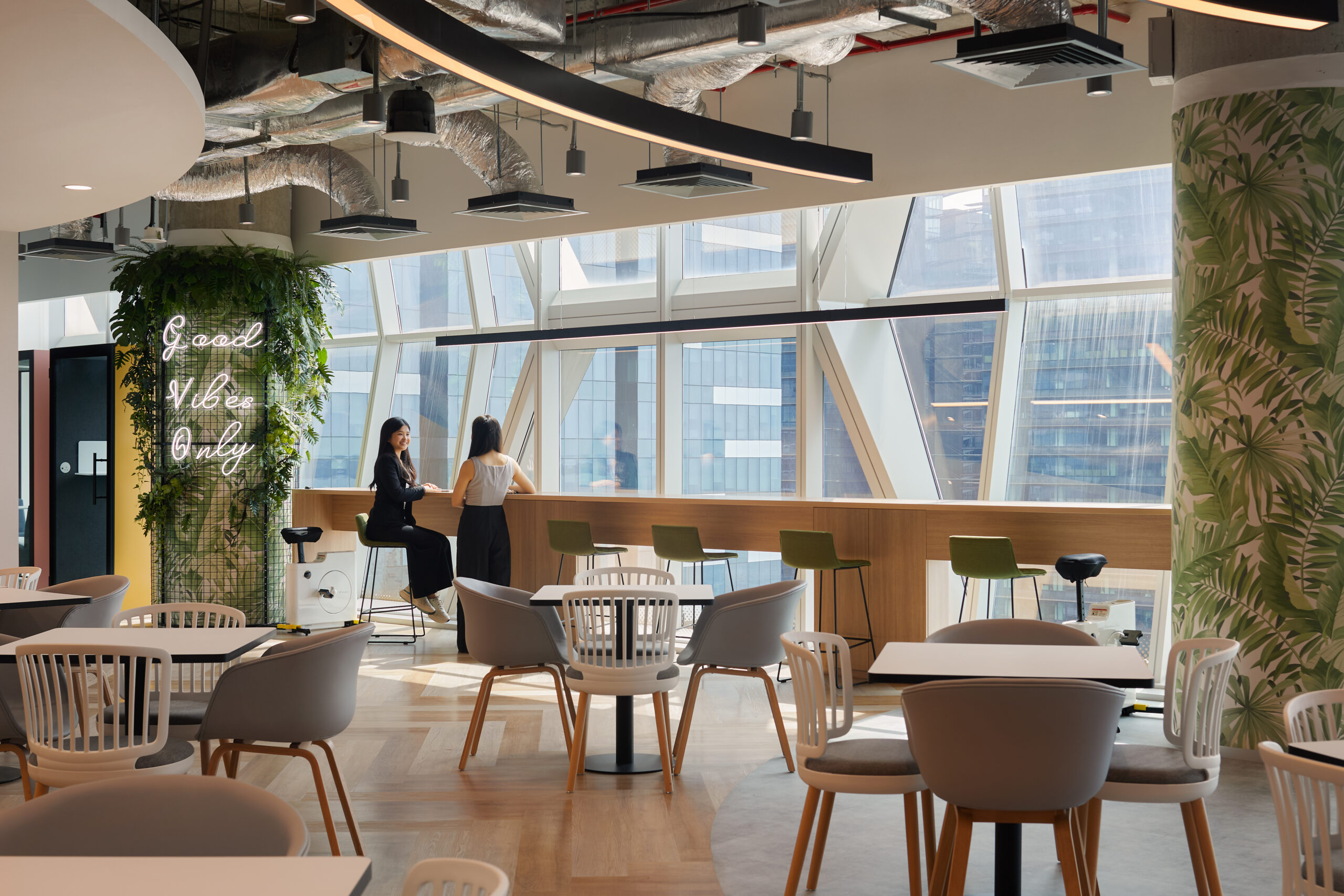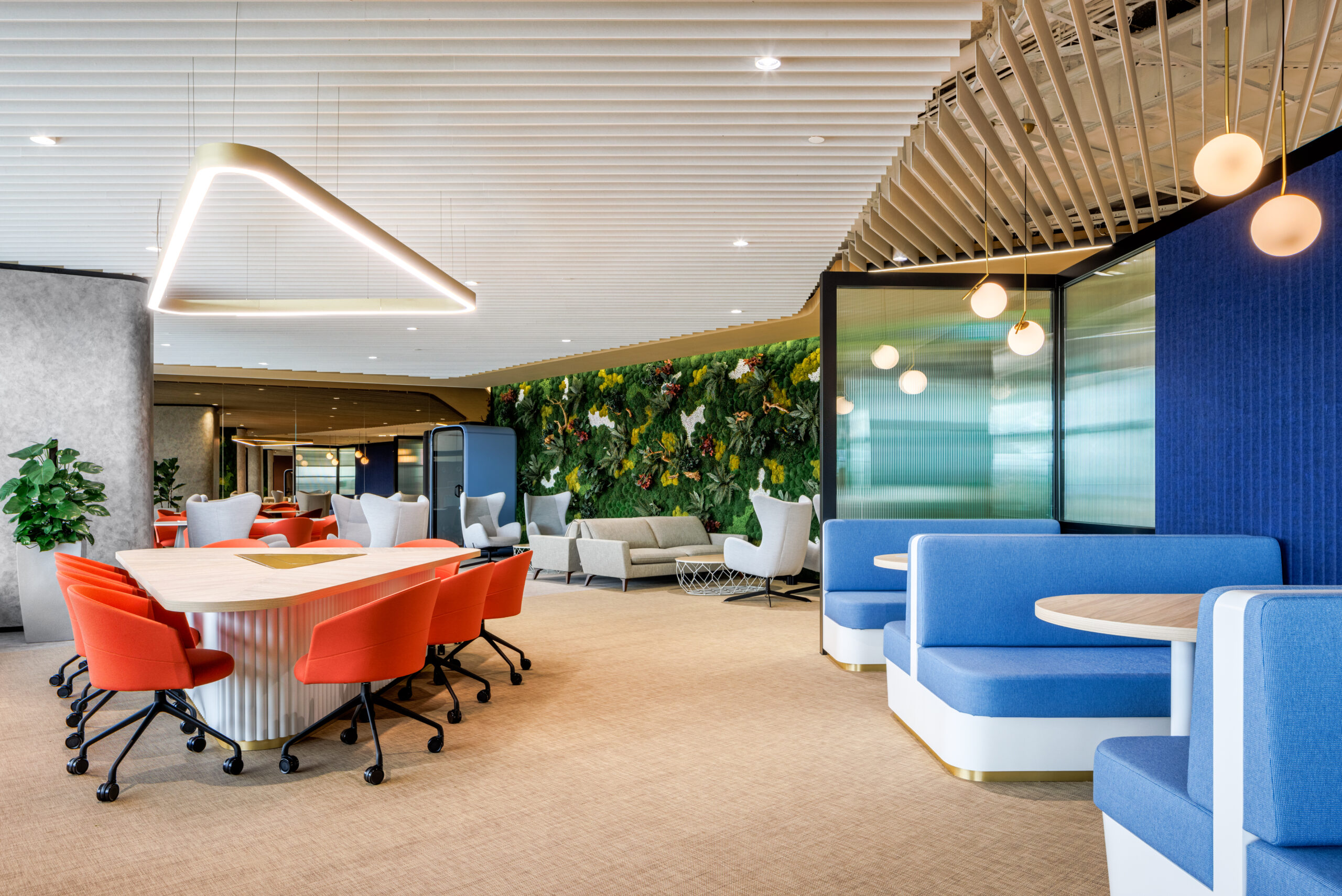Key Takeaways
- An effective office layout design enhances productivity by promoting collaboration, communication, and employee well-being.
- Activity-based workspaces and modular furniture offer flexibility and adaptability, catering to various work styles and tasks which boosts productivity.
- Using features like natural light, ergonomic furniture, and biophilic elements in the office design layout significantly improves employee health, satisfaction, and overall workplace productivity.
The Importance of Office Layout Design
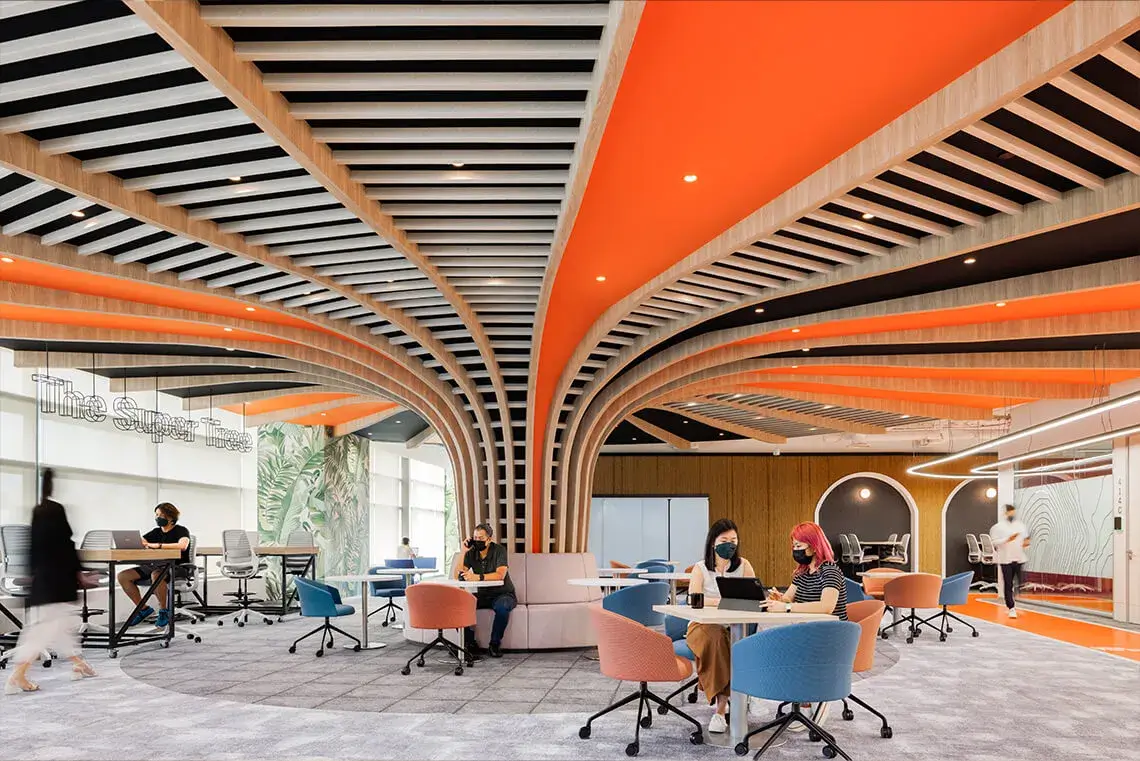 SAP
Modern offices are not just a place of work, they are an avenue to build careers and businesses, hence they should promote the company culture and inspire employees to work. An effective cubicle layout is more than just an organised workspace; it is the backbone of a productive and satisfied workforce. The right office layout, including a well-designed home office layout, maximises productivity by promoting ideas that encourage:
SAP
Modern offices are not just a place of work, they are an avenue to build careers and businesses, hence they should promote the company culture and inspire employees to work. An effective cubicle layout is more than just an organised workspace; it is the backbone of a productive and satisfied workforce. The right office layout, including a well-designed home office layout, maximises productivity by promoting ideas that encourage:
- Collaboration and interaction among employees
- Easy communication and sharing of ideas
- A dynamic and innovative work environment
- A healthy company culture
1. Open Plan Office Layouts for Collaboration
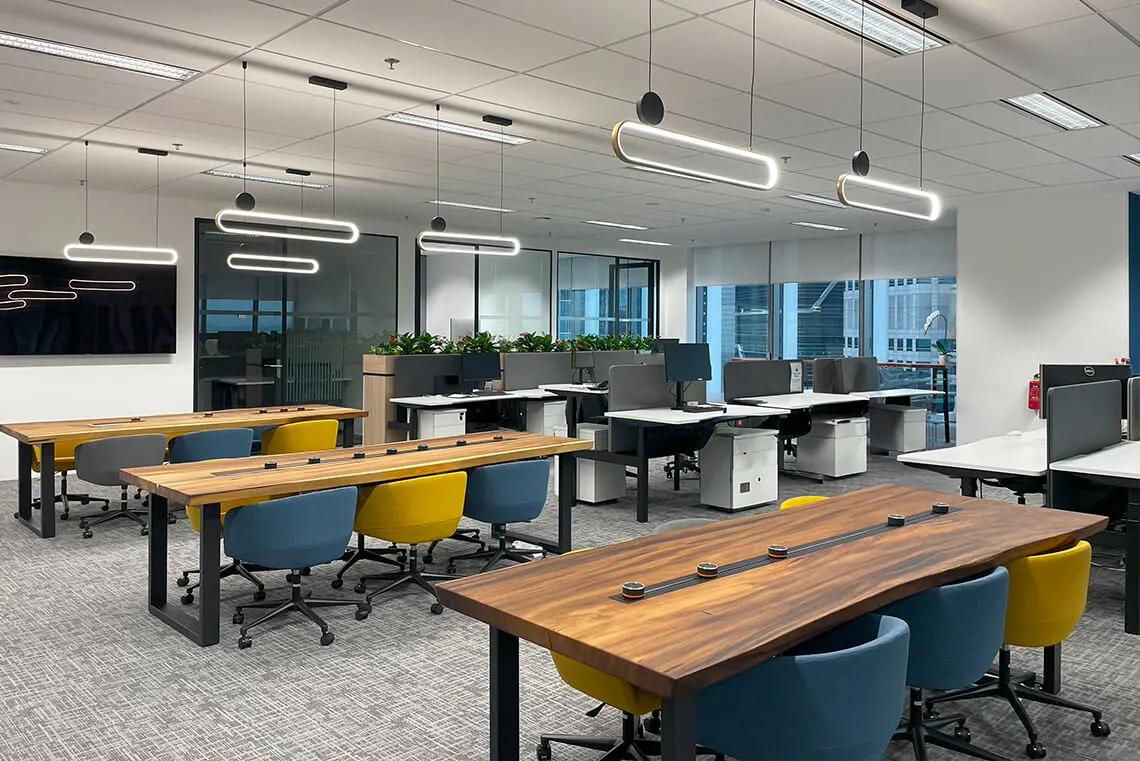 Dentsply Sirona
Open-plan office layout ideas are the hallmark of modern offices as they are characterised by:
Dentsply Sirona
Open-plan office layout ideas are the hallmark of modern offices as they are characterised by:
- Large, open spaces with minimal barriers or partitions
- Flexible workstations which are not restricted to traditional desks
- Conference rooms and collaborative spaces for employees to share ideas.
- The absence of conventional cubicles and private offices
2. Activity-Based Workspaces
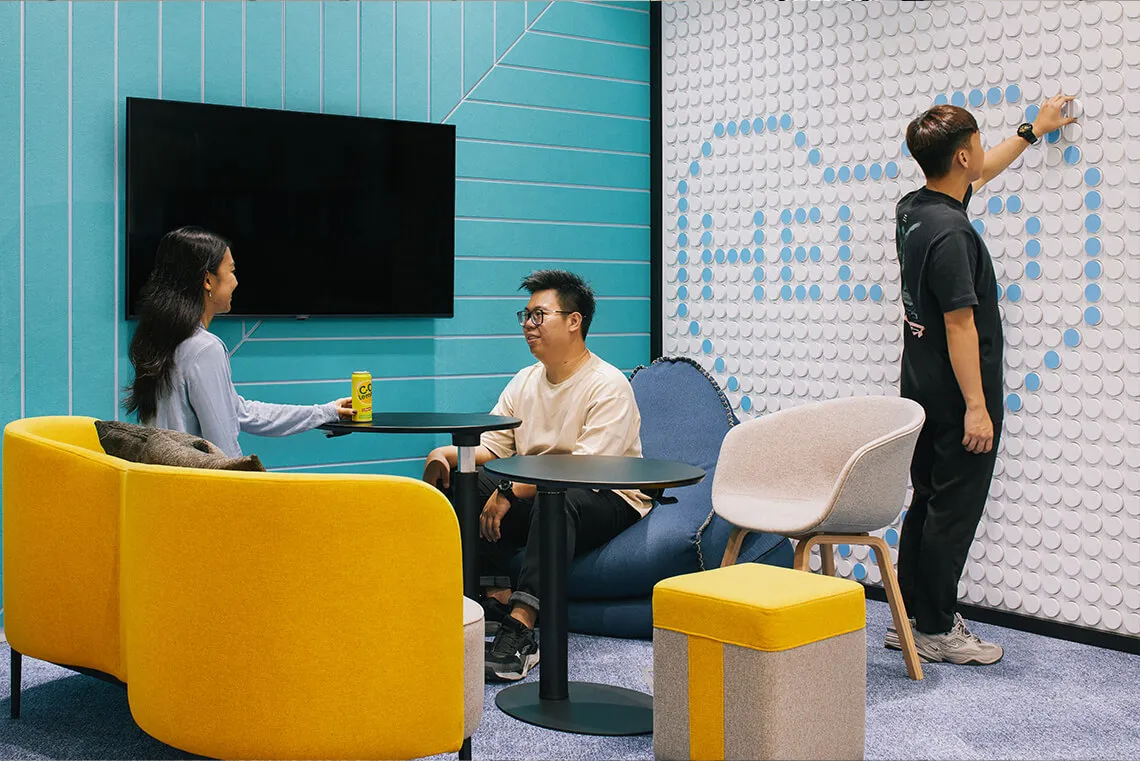 Suntory Beverage & Food Asia
Activity-based workspaces (ABW) are crucial for building a successful business as they accommodate various work styles and tasks which offer flexibility and foster productivity in the office environment. Popularised by the Dutch consultant Erik Veldhoen, this concept focuses on creating specific areas tailored to different activities, such as:
Suntory Beverage & Food Asia
Activity-based workspaces (ABW) are crucial for building a successful business as they accommodate various work styles and tasks which offer flexibility and foster productivity in the office environment. Popularised by the Dutch consultant Erik Veldhoen, this concept focuses on creating specific areas tailored to different activities, such as:
- focus rooms
- open lounges
- huddle rooms
- breakout rooms
- individual workspaces
3. Incorporating Natural Light
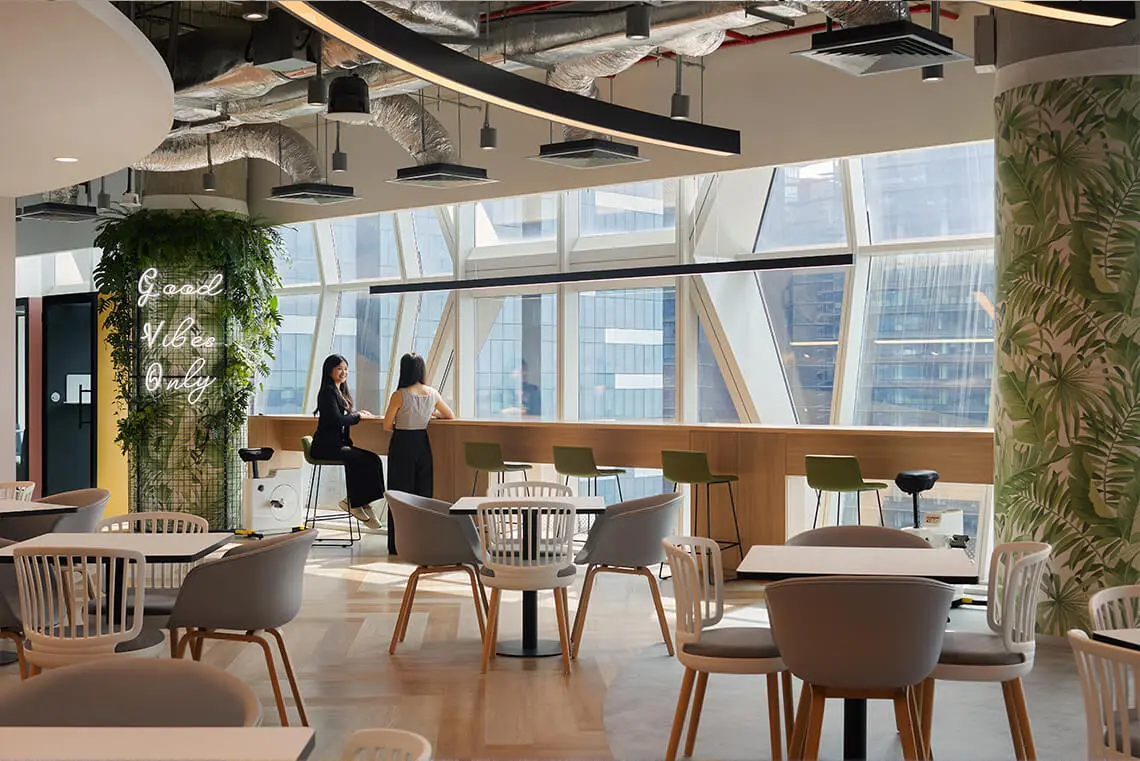 In modern cubicle office layout ideas, natural lights play a significant role in improving the mood and energy levels of the employees, ultimately fostering productivity. Studies show that exposure to natural light can increase productivity levels by 16% due to better illumination. Moreover, having plenty of daylight in offices results in fewer work-related physical issues amongst employees like eyestrain, headaches, and drowsiness. This further extends the benefits of natural light beyond productivity to mental health boosts and reduced depression risks.
Here are some ways you can maximise natural light in the office design with strategic window placement, reflective surfaces, and open floor plans
In modern cubicle office layout ideas, natural lights play a significant role in improving the mood and energy levels of the employees, ultimately fostering productivity. Studies show that exposure to natural light can increase productivity levels by 16% due to better illumination. Moreover, having plenty of daylight in offices results in fewer work-related physical issues amongst employees like eyestrain, headaches, and drowsiness. This further extends the benefits of natural light beyond productivity to mental health boosts and reduced depression risks.
Here are some ways you can maximise natural light in the office design with strategic window placement, reflective surfaces, and open floor plans
- Install larger windows to allow more daylight into the space
- Use glass partitions to enhance the flow of light throughout the office
- Incorporate reflective surfaces like mirrors and light-coloured walls to amplify the light and create a brighter workspace
- Reducing absenteeism: Workers closer to windows tend to take fewer sick days, leading to lower absenteeism rates and higher overall productivity
- Lowering energy consumption: Features like daylight sensors can optimise the balance between natural and artificial light, reducing energy costs by up to 40%
4. Private Spaces for Focused Work
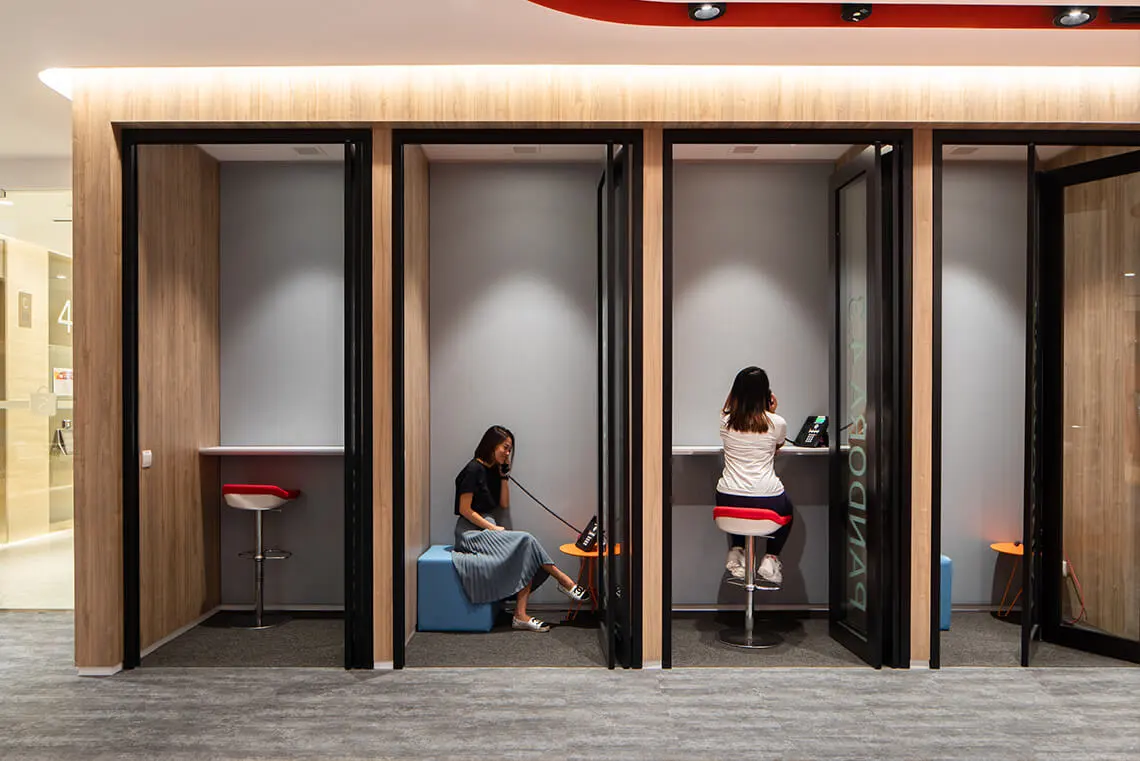 Shopee Campus
Improving concentration and productivity requires incorporating private spaces in the office layout as well-designed focus spaces can reduce stress and eliminate distractions, allowing employees to concentrate on their tasks. Quiet zones are particularly important in open-plan offices, where noise levels cause distractions.
Focus spaces like quiet rooms with soundproofing materials promote privacy and help employees do confidential tasks which need higher concentration levels. Other spaces like hybrid meeting rooms and private calling pods make it easier to hold collaborative meetings and attend sensitive phone calls respectively.
Additionally, mindfulness and relaxation rooms can help employees recenter and concentrate more effectively. These spaces often feature calming elements like soft lighting, comfortable seating, and soundproofing to create a peaceful environment.
Shopee Campus
Improving concentration and productivity requires incorporating private spaces in the office layout as well-designed focus spaces can reduce stress and eliminate distractions, allowing employees to concentrate on their tasks. Quiet zones are particularly important in open-plan offices, where noise levels cause distractions.
Focus spaces like quiet rooms with soundproofing materials promote privacy and help employees do confidential tasks which need higher concentration levels. Other spaces like hybrid meeting rooms and private calling pods make it easier to hold collaborative meetings and attend sensitive phone calls respectively.
Additionally, mindfulness and relaxation rooms can help employees recenter and concentrate more effectively. These spaces often feature calming elements like soft lighting, comfortable seating, and soundproofing to create a peaceful environment.
5. Modular Furniture for Flexibility
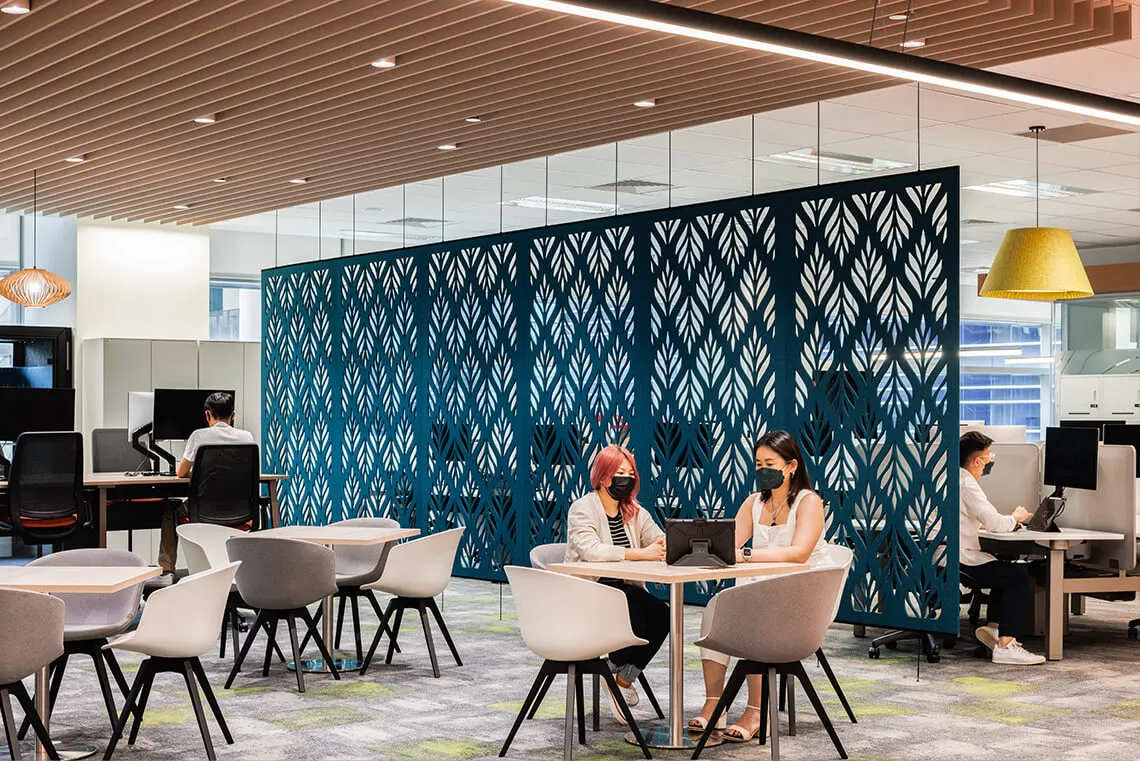 SAP
Modular furniture is a game-changer in modern office design as it offers flexibility and adaptability, allowing for quick reconfiguration of office layouts to meet changing needs which makes work environments more dynamic. For instance, Steelcase Flex Active Frames and the Turnstone Bivi range provide customisable configurations that support both individual and group work.
The space-saving capability of modular furniture has made it a prerequisite for best office layout designs as they can utilise limited office space efficiently, helping companies accommodate growing teams without the need for extensive renovations. The scalability of modular furniture means new pieces can be easily added as the team grows which not only saves space but also reduces frequent reconfiguration costs.
Modular furniture is also sustainable and cost-effective, often made from recyclable materials and designed for easy assembly and disassembly. This makes it a practical choice for businesses looking to create a modern, flexible, and eco-friendly workspace.
SAP
Modular furniture is a game-changer in modern office design as it offers flexibility and adaptability, allowing for quick reconfiguration of office layouts to meet changing needs which makes work environments more dynamic. For instance, Steelcase Flex Active Frames and the Turnstone Bivi range provide customisable configurations that support both individual and group work.
The space-saving capability of modular furniture has made it a prerequisite for best office layout designs as they can utilise limited office space efficiently, helping companies accommodate growing teams without the need for extensive renovations. The scalability of modular furniture means new pieces can be easily added as the team grows which not only saves space but also reduces frequent reconfiguration costs.
Modular furniture is also sustainable and cost-effective, often made from recyclable materials and designed for easy assembly and disassembly. This makes it a practical choice for businesses looking to create a modern, flexible, and eco-friendly workspace.
6. Co-Working Office Layouts
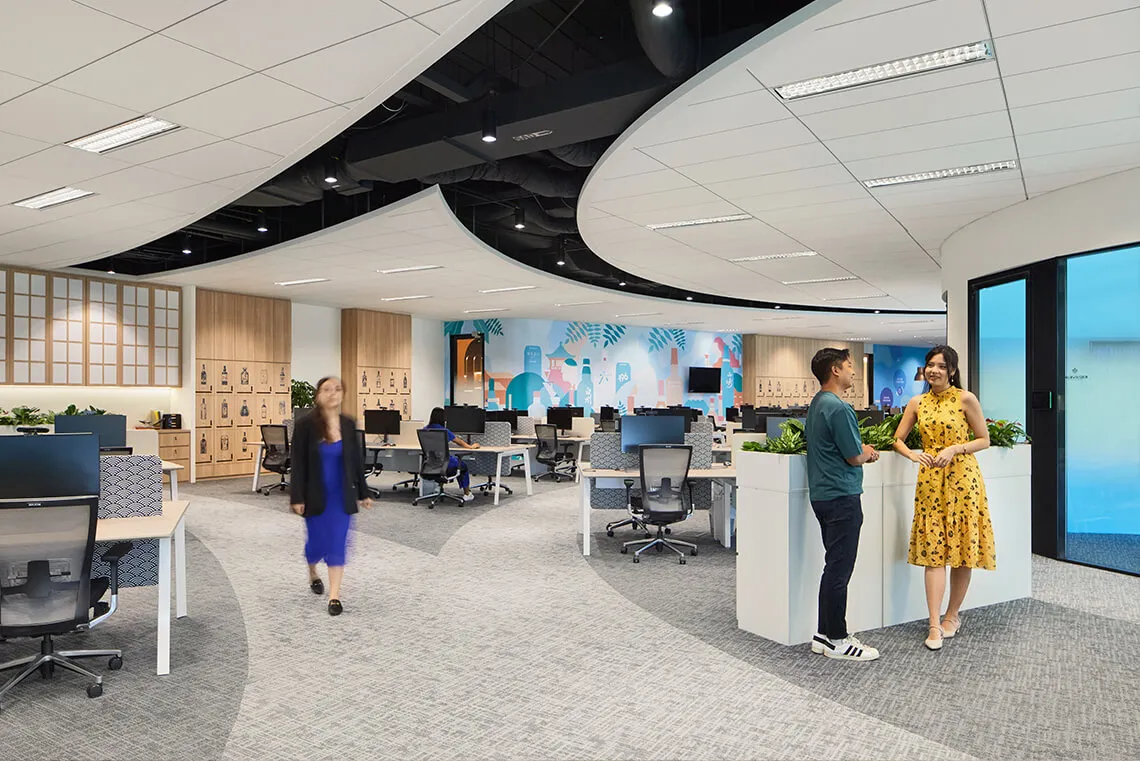 Beam Suntory
The co-working office layout is a modern and collaborative approach that involves individuals or small groups from different companies or professions to share a work environment. The layouts prioritise flexibility, letting people choose workspaces that suit their needs. This allows for greater accessibility and a more tailored work environment. The flexibility fosters a sense of community and collaboration, enhancing networking opportunities and skill-sharing.
Co-working spaces often feature:
Beam Suntory
The co-working office layout is a modern and collaborative approach that involves individuals or small groups from different companies or professions to share a work environment. The layouts prioritise flexibility, letting people choose workspaces that suit their needs. This allows for greater accessibility and a more tailored work environment. The flexibility fosters a sense of community and collaboration, enhancing networking opportunities and skill-sharing.
Co-working spaces often feature:
- Open-plan interiors with no physical barriers, encouraging spontaneous conversations and interactions
- Common areas and shared spaces provide informal settings for members to network and relax, further promoting a collaborative environment
- Onsite community managers who facilitate member introductions and organise social and networking events.
7. Ergonomic Furniture for Employee Well-being
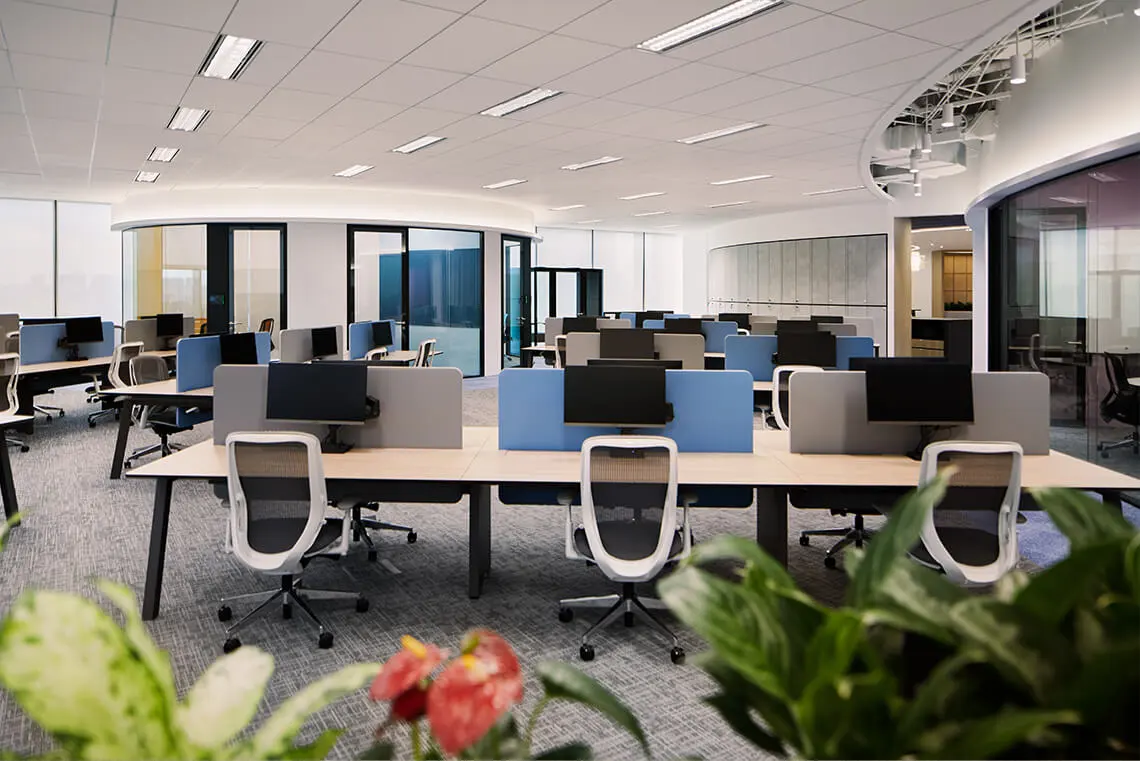 Suntory Beverage & Food Asia
Ergonomic office furniture is designed to promote proper posture and reduce the risk of workplace injuries, making it a crucial element of any office layout. Supporting employee well-being is essential because happy and healthy employees are often more productive. Ergonomic furniture can help prevent musculoskeletal disorders and other health issues associated with prolonged sitting.
Properly designed ergonomic chairs and adjustable desks are key components of an ergonomic office layout as they support the natural curvature of the spine and allow employees to maintain neutral body positioning.
Benefits of ergonomic chairs and adjustable desks include:
Suntory Beverage & Food Asia
Ergonomic office furniture is designed to promote proper posture and reduce the risk of workplace injuries, making it a crucial element of any office layout. Supporting employee well-being is essential because happy and healthy employees are often more productive. Ergonomic furniture can help prevent musculoskeletal disorders and other health issues associated with prolonged sitting.
Properly designed ergonomic chairs and adjustable desks are key components of an ergonomic office layout as they support the natural curvature of the spine and allow employees to maintain neutral body positioning.
Benefits of ergonomic chairs and adjustable desks include:
- Reduced musculoskeletal disorders risk
- Improved posture and reduced back pain
- Increased productivity and focus
- Allowing employees to alternate between sitting and standing,
8. Maximising Space Utilisation
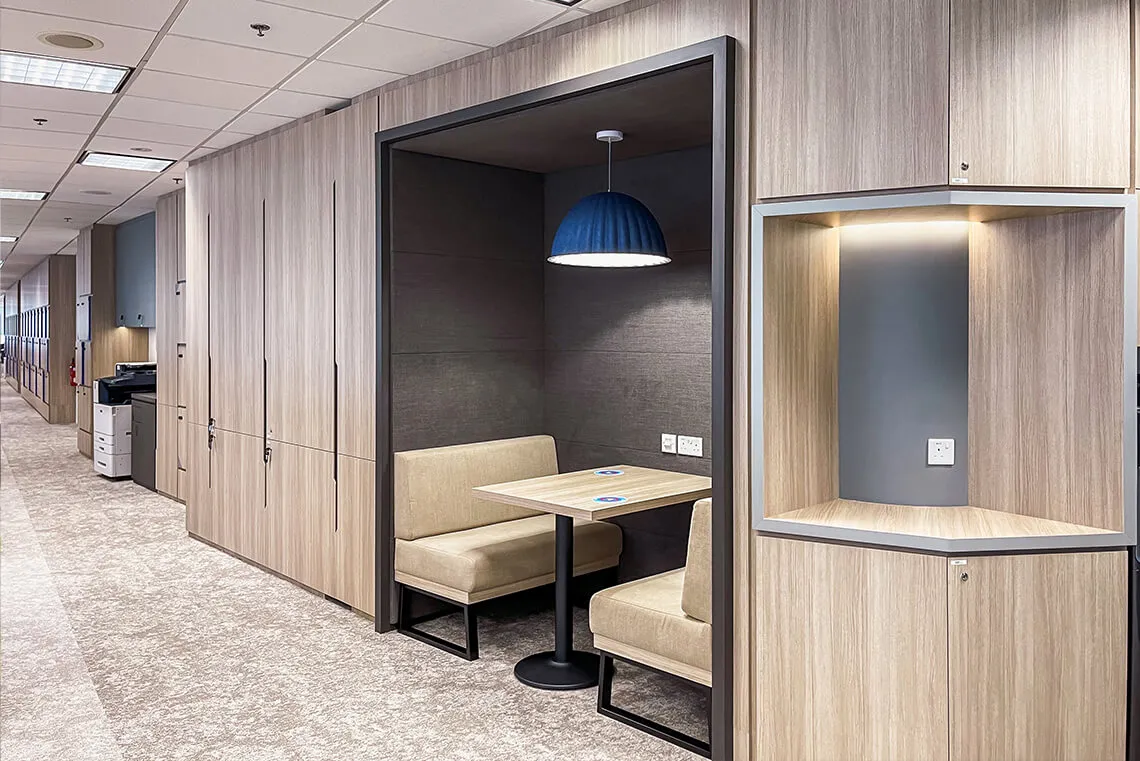 LGT Bank
An essential but neglected aspect of office layout planning is efficient space management, especially needed in small offices. Identifying barely used areas and crowded spaces provides valuable insights on how to make appropriate changes to optimise floor space utilisation. You can monitor the workspace utilisation to adjust Activity-Based Workspaces (ABW) settings as per your employee and business needs.
To maximise office spaces you need multi-functional furniture like shared desks, and innovative wall storage solutions which declutter the workspace, ensuring efficient space usage. Effective storage solutions like shelves, cabinets, and file organisers keep the space clean and organised, reducing clutter and improving productivity.
Companies benefit by providing booking options for spaces as employees can reserve workspaces, meeting rooms, or collaborative areas according to their needs, ultimately reducing space wastage and streamlining resource allocation.
LGT Bank
An essential but neglected aspect of office layout planning is efficient space management, especially needed in small offices. Identifying barely used areas and crowded spaces provides valuable insights on how to make appropriate changes to optimise floor space utilisation. You can monitor the workspace utilisation to adjust Activity-Based Workspaces (ABW) settings as per your employee and business needs.
To maximise office spaces you need multi-functional furniture like shared desks, and innovative wall storage solutions which declutter the workspace, ensuring efficient space usage. Effective storage solutions like shelves, cabinets, and file organisers keep the space clean and organised, reducing clutter and improving productivity.
Companies benefit by providing booking options for spaces as employees can reserve workspaces, meeting rooms, or collaborative areas according to their needs, ultimately reducing space wastage and streamlining resource allocation.
Summary
In conclusion, we can say that an office layout design with elements like flexible workstations, ergonomic furniture, space utilisation etc greatly enhances employee well-being and productivity. Companies should choose the best office layout to create a dynamic and flexible workspace where employee satisfaction and company culture both are reflected, making it a successful business venture. To learn more about how to execute these ideas, check out this guide on the commercial design process.Elevate your workspace today!
Frequently Asked Questions
How does office layout impact employee productivity?
Office layout impacts productivity by promoting collaboration, and interaction along with the minimization of distractions which ultimately helps in optimising workflow and enhancing communication.
What are the benefits of open-plan office layouts?
Open-plan office layouts foster collaboration and reduce construction costs by creating a dynamic work environment, having features like quiet zones and private spaces to reduce distractions.
Why is natural light important in office design?
Natural light is crucial for improving the energy level and mood of employees. It also promotes employee well-being as it enhances both physical and mental health by reducing eyestrain and headaches along with increased brain activity.
What are activity-based workspaces?
Activity-based workspaces like breakout spaces, huddle rooms, focus rooms and open lounges are flexible office layouts that allow employees to choose specific areas for different tasks, promoting productivity and creativity. They support diverse work styles and can enhance employee well-being.
How does ergonomic furniture benefit employees?
Ergonomic furniture helps employees maintain proper posture and reduce the risk of workplace injuries, by enhancing comfort, ultimately leading to increased job satisfaction and productivity.
